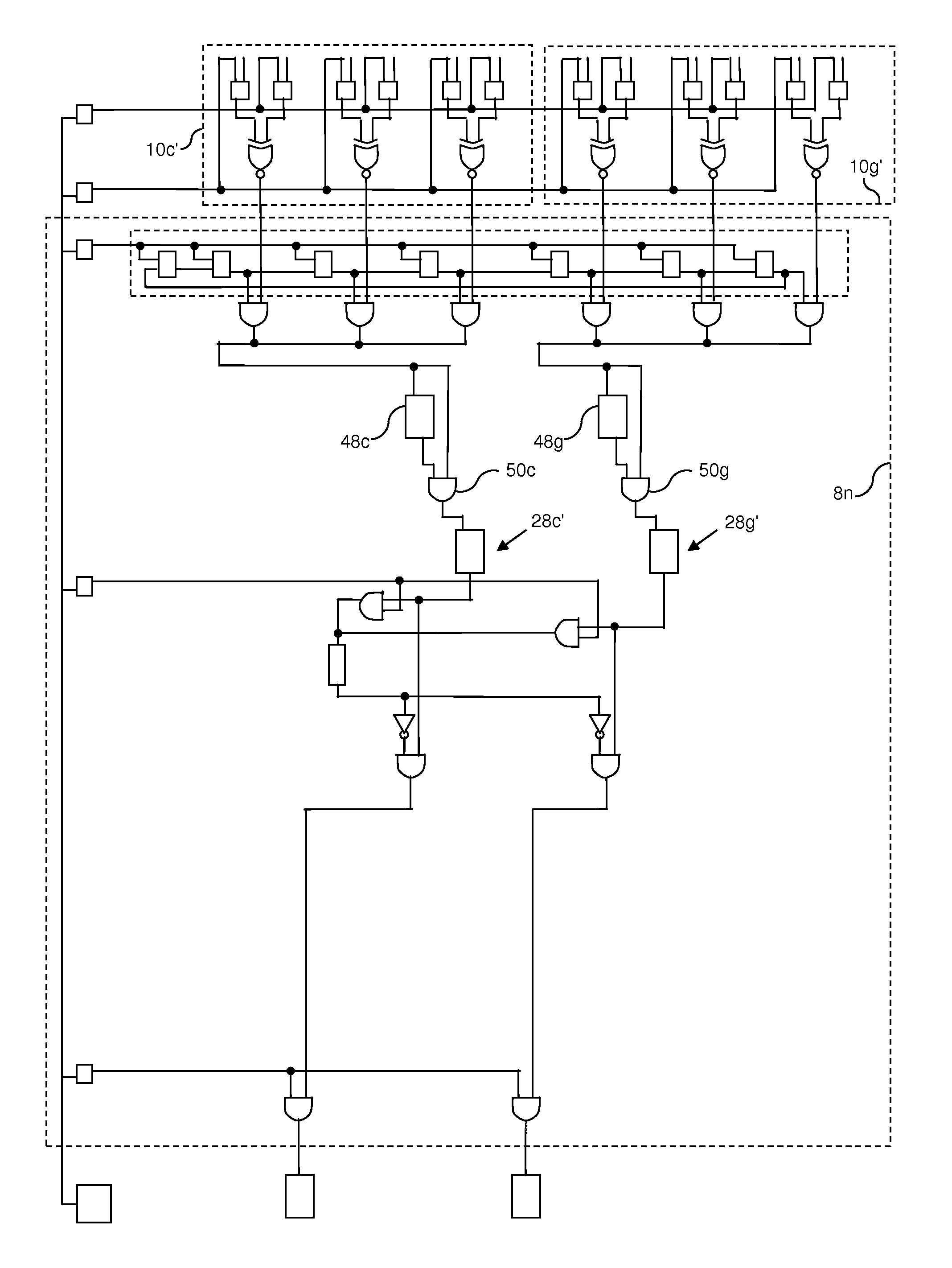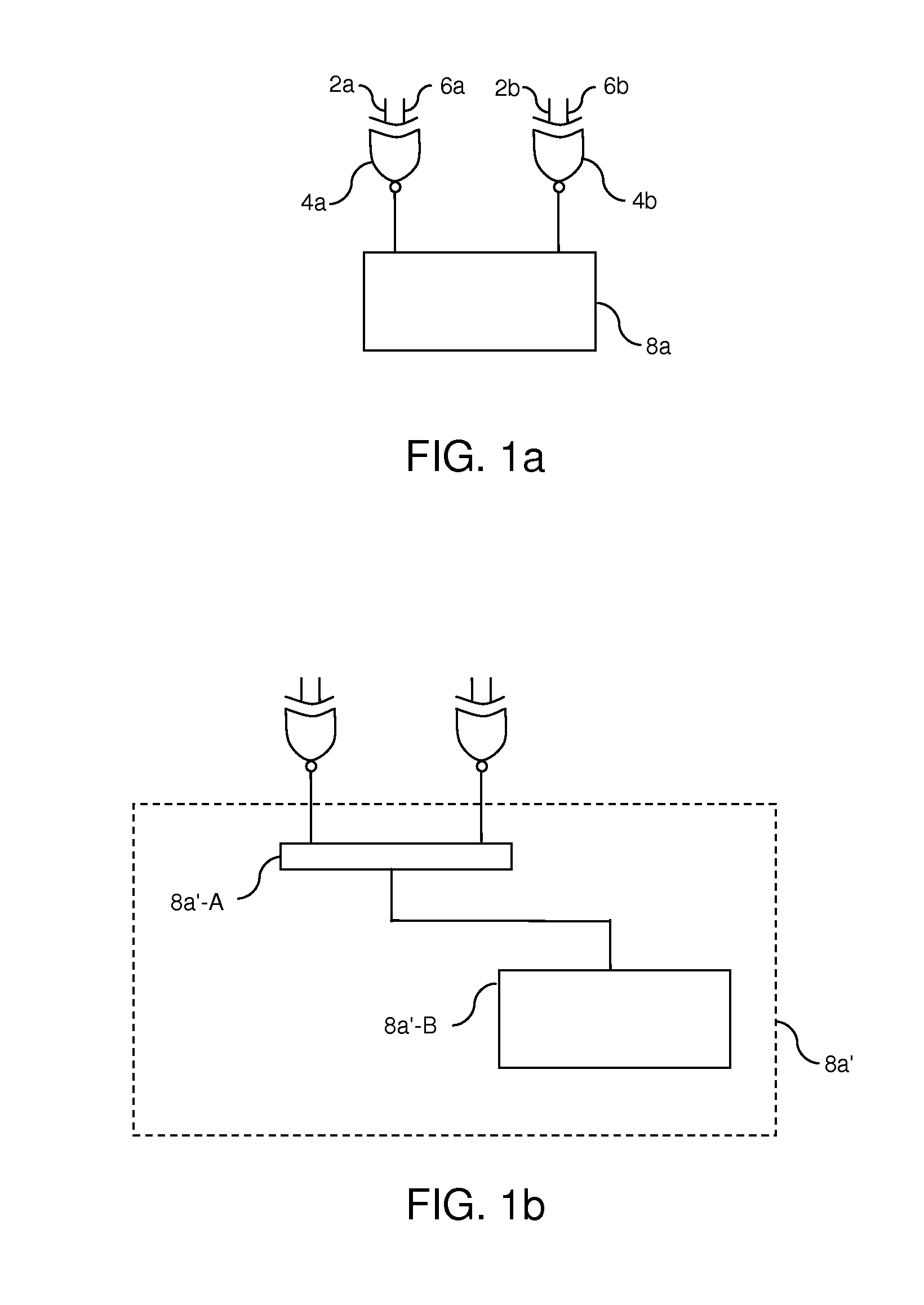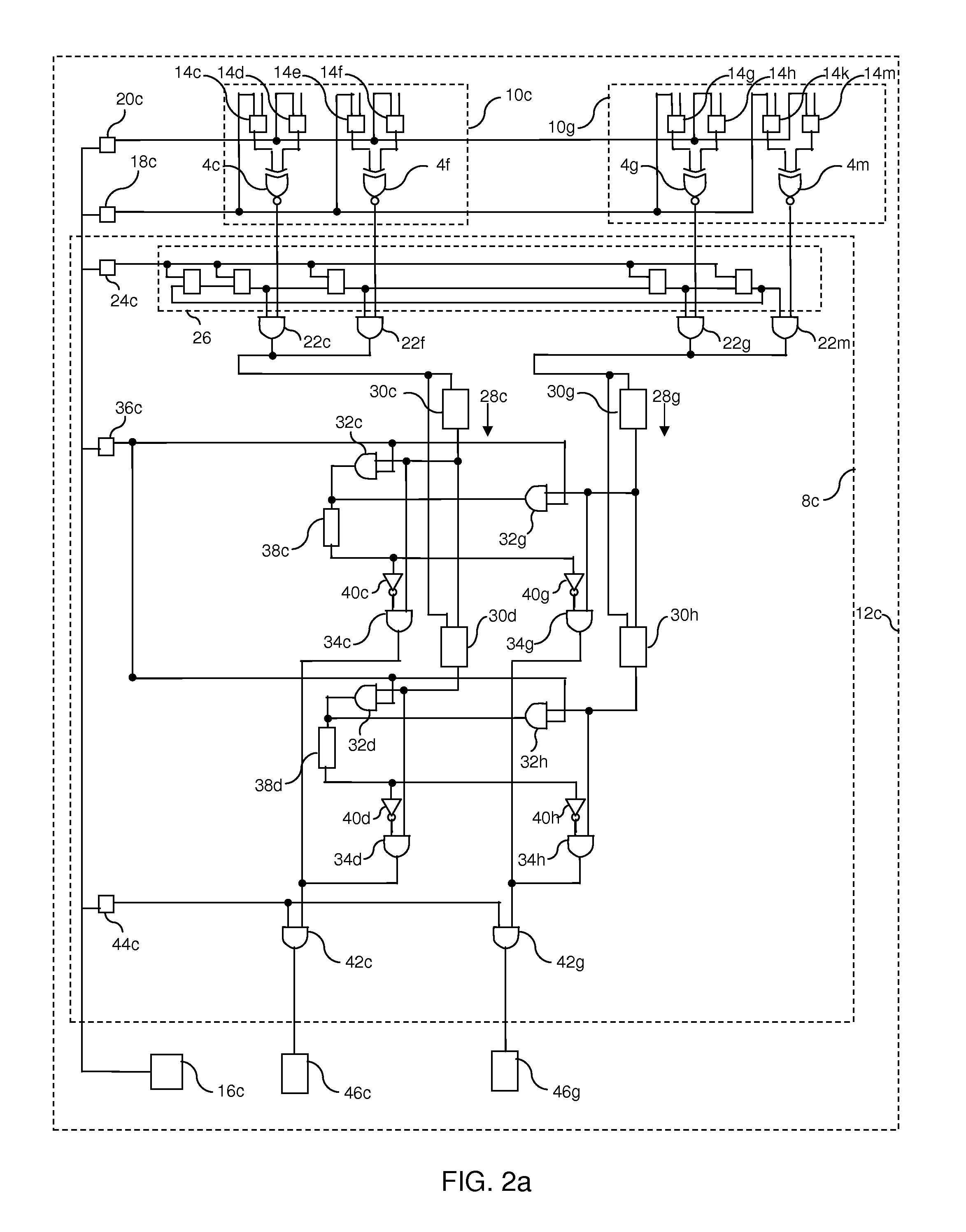Method of Pattern Recognition for Artificial Intelligence
a pattern recognition and artificial intelligence technology, applied in the field of parallel processing, can solve the problems of labor intensive applications including certain pattern recognition applications that perform ineffectively, disadvantageous limitation of pattern recognition in data processing performance,
- Summary
- Abstract
- Description
- Claims
- Application Information
AI Technical Summary
Benefits of technology
Problems solved by technology
Method used
Image
Examples
Embodiment Construction
[0029]FIG. (1a) is a schematic view of a first preferred embodiment of the present invention which is applied for pattern recognition which comprises the following steps:
[0030]1) Storing a pattern of data by applying an electrical input, e.g. a binary logic level (1) input, or the absence of electrical input, e.g. a binary logic level (0) input, to inputs (2a) and (2b) comprised by exclusive-nor logic gates (4a) and (4b), wherein a pattern of data is stored in parallel;
[0031]2) Comparing an input pattern of data with the stored pattern of data by applying an electrical input, e.g. a binary logic level (1) input, or the absence of electrical input, e.g. a binary logic level (0) input, to inputs (6a) and (6b) comprised by exclusive-nor gates (4a) and (4b), such that exclusive-nor gates (4a) and (4b) each produce an electrical output, e.g. a binary logic level (1) output, or the absence of electrical output, e.g. a binary logic level (0) output, according to the logic of their respecti...
PUM
 Login to View More
Login to View More Abstract
Description
Claims
Application Information
 Login to View More
Login to View More - R&D
- Intellectual Property
- Life Sciences
- Materials
- Tech Scout
- Unparalleled Data Quality
- Higher Quality Content
- 60% Fewer Hallucinations
Browse by: Latest US Patents, China's latest patents, Technical Efficacy Thesaurus, Application Domain, Technology Topic, Popular Technical Reports.
© 2025 PatSnap. All rights reserved.Legal|Privacy policy|Modern Slavery Act Transparency Statement|Sitemap|About US| Contact US: help@patsnap.com



